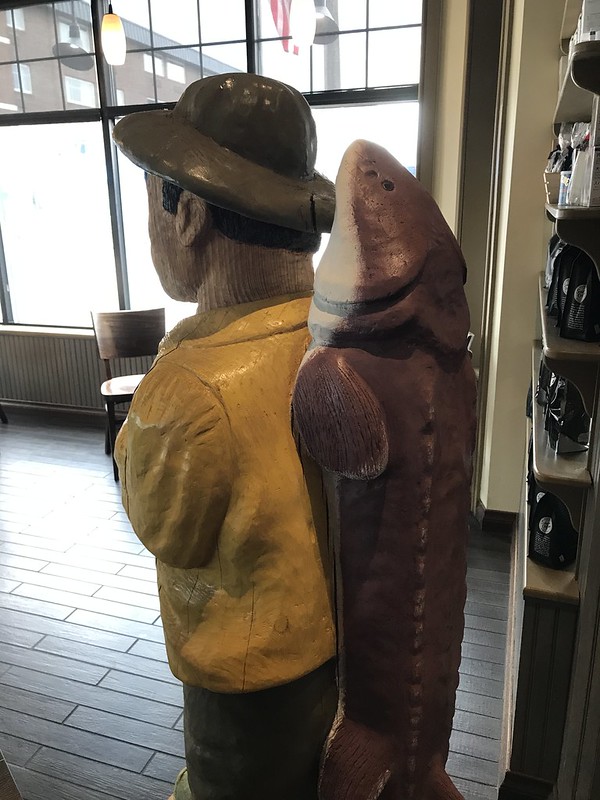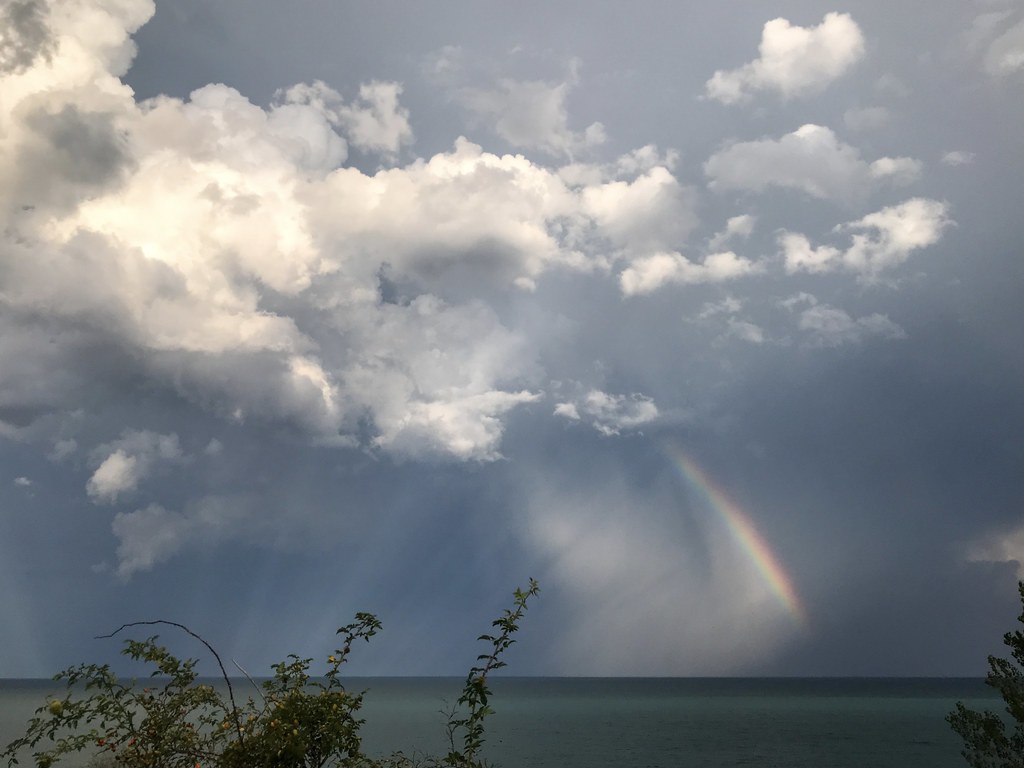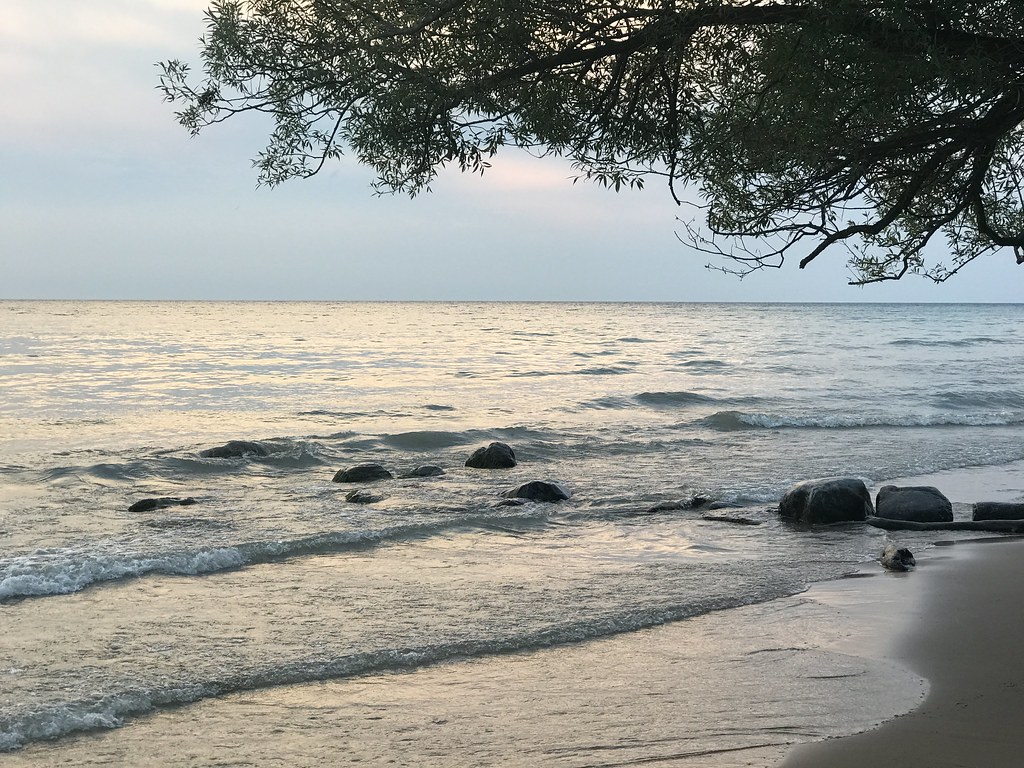Tag Archives: Lake Michigan
Rare visible winter sunrise over Lake Michigan
During most of the winter in Chicago, the sky is a uniform leaden gray. Today, however, there was a moment of sunrise with some defined clouds. Right under the sunrise are the steel mills of Indiana with their plumes. During summer, the sun will rise over the Chicago Park District field house to your left.
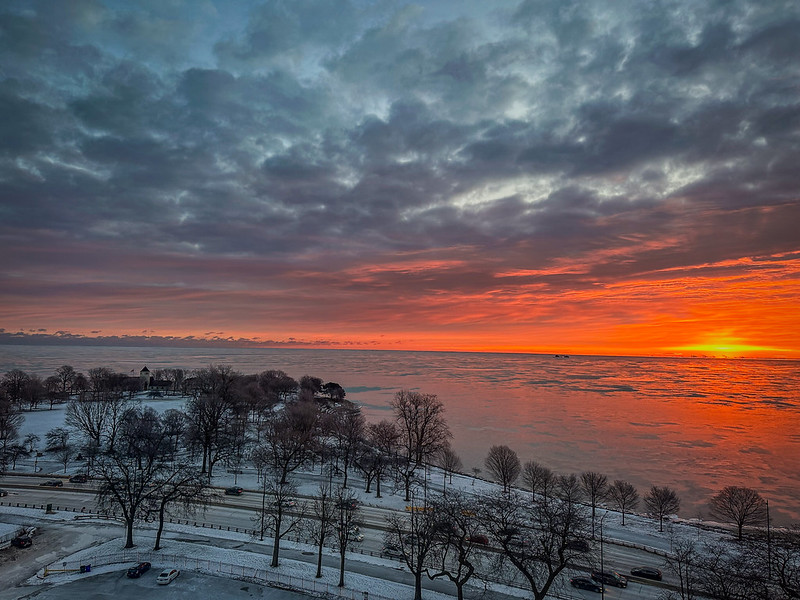
Third day of sea smoke on Lake Michigan
January sea smoke on Lake Michigan at -7°F
January sea smoke on Lake Michigan at -9°F
More January sea smoke on Lake Michigan. See this article by Catherine Schmitt for the science behind sea smoke.
Summer’s rainy day rainbow
Drought, downpours, tornadoes, and rainbows
After months of abnormally dry to severe drought conditions, Chicago had a near record “rainfall event” the weekend of July 1–2, especially on Sunday.
To me, it seemed like a normal rain, but I don’t have a personal basement to worry about. I gave up any thought of outdoor activities and stuck to reading, TV, etc. I figured I’d be grateful if this rain, plus a few others that preceded it, would put a dent in the severe drought conditions.
As of July 11, Chicago was still abnormally dry, but look at the difference.
June 10, 2023:
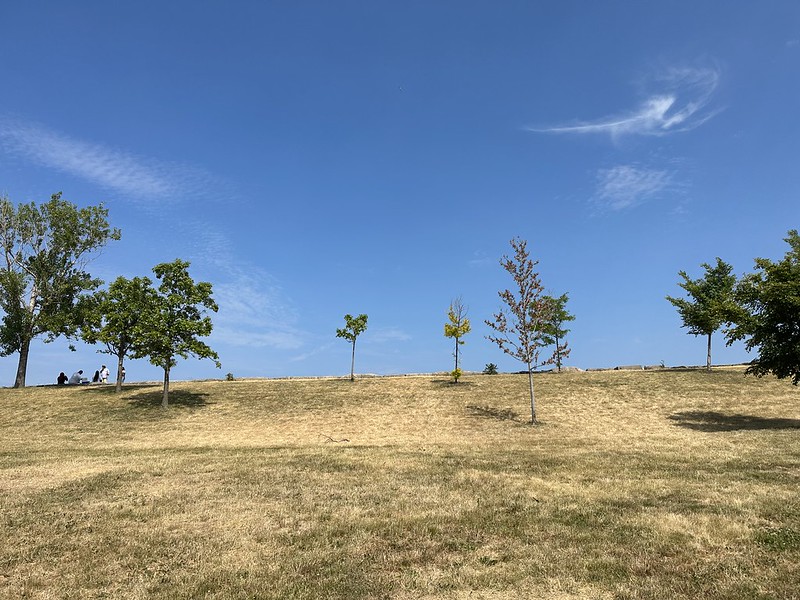
Same area, July 9, 2023, a little less than a month later:

When I noticed the orange light on my weather radio flashing the evening of July 12, I was hoping for beach hazards or at worst a flash flood watch, but, no, it was a tornado watch. As the sky got darker, it flipped to the red light — tornado warning. Not long after that, the sirens started — an eerie sound in the eerie premature twilight.
Over the next hour or so I saw several reports of tornadoes, starting with Summit in the southwest suburbs. Then it seemed like they were everywhere — southwest, west, north.
The sky brightened for a moment, then darkened, then brightened again just as another brief deluge descended. I looked — yes, there was a rainbow (and a very faint second mirror image rainbow). It faded, then reappeared, or maybe it was a second one in a similar spot. The second, with a faint mirror image like the first, was the full arch, which I couldn’t capture from my window.
It faded as blue sky appeared to the east, then pink from the setting sun tinged the clouds that had piled up.

Rainbow at Promontory Point
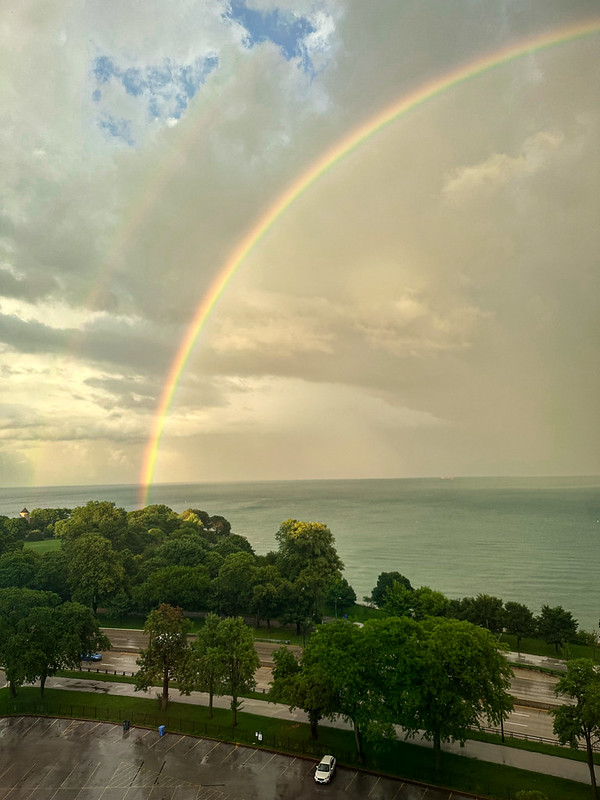
Second rainbow at Promontory Point

Clouds over Lake Michigan to the east after the storms

Pink-tinged clouds to the east over Lake Michigan reflecting sunset
December sea smoke on Lake Michigan at -8°F
I’m not sure whether I’ve seen sea smoke in December before, but it is close to January. With bonus of Jack Frost on the window.
Sea smoke is essentially just fog above water, according to AccuWeather Senior Meteorologist Dave Samuhel. The occurrence of sea smoke is similar to the steam that appears over a boiling pot of water or a hot bath.
“It happens when the air mass is so cold it makes the water steam like a pot on a stove would,” Samuhel said. Sea smoke is also sometimes referred to as arctic sea smoke, frost smoke, steam fog or sea fog.
In order for sea smoke to occur, the air has to be very cold and the water has to be comparatively warm. As a light wind of cold air sweeps in, it cools the warm air immediately above the water, which makes the air dip below the dew point. The air is only able to hold so much moisture before it condenses into fog, or sea smoke.

January sea smoke on Lake Michigan at -2°F
January continues to be the best month for sea smoke on Lake Michigan.
Sea smoke is essentially just fog above water, according to AccuWeather Senior Meteorologist Dave Samuhel. The occurrence of sea smoke is similar to the steam that appears over a boiling pot of water or a hot bath.
“It happens when the air mass is so cold it makes the water steam like a pot on a stove would,” Samuhel said. Sea smoke is also sometimes referred to as arctic sea smoke, frost smoke, steam fog or sea fog.
In order for sea smoke to occur, the air has to be very cold and the water has to be comparatively warm. As a light wind of cold air sweeps in, it cools the warm air immediately above the water, which makes the air dip below the dew point. The air is only able to hold so much moisture before it condenses into fog, or sea smoke.

Smith Bros. Coffee and Port Washington
August 29, 2021
J found out Smith Bros. Coffee in Port Washington, Wisconsin, would be closed permanently after Labor Day weekend. On Sunday we took a quick trip to stop there and a few other places.
It was a good day for me to be in an air-conditioned car — the car thermometer read 97ºF at the Lake Forest Oasis, where the sky was sunny and the atmosphere heavy and oppressive with heat and humidity.
As we progressed northward I noticed enough dark clouds gathering to obscure the sun. Near Milwaukee the skies opened up, accompanied by some lightning and thunder. I’m not sure how long the bad spell lasted — maybe 20 minutes. By the end of it, the temperature had dipped to about 78ºF — that’s more like it.
I found a slightly different route into town that took us past Lion’s Den Gorge Nature Preserve. It’s now on my list.
Our first stop was Bernie’s Fine Meats, which is the source not only of deliciously addictive but unhealthful garlic summer sausage, but also many unhealthful European sweets. I spent well over $100 there. It’s showing in the waistline I no longer have.
Smith Bros. is across the street, part of the Duluth Trading store, which will expand into the Smith Bros. space when it closes. I ordered an iced coffee and sandwiches to go, and picked up coffee beans and an insulated travel mug. Of course I posed with the fisherman sculpture which was installed in 2020. It more or less replicates the sign on the roof, down to the fish on the man’s back, but without the man’s pipe. Our health-conscious times!
Reservations at Twisted Willow were not to be had, so we ordered food and drove around until it was ready to be picked up, about 40 minutes. We re-found the light station, but more important we found Port Washington has extensive lakefront parks. This was a good time to find them because sky was still dramatic from the on-and-off thunderstorms in the area. We decided to return with dinner and use one of the many picnic tables.
After we ate the salad portion of dinner in a strong breeze, during which another rainbow appeared, J took a brief detour toward Belgium and Harrington Beach State Park, home to one of my favorite views on County Road D — a single tree by the side of the road that leads to a stop sign and Lake Michigan. Fail to stop at your peril.
On the way back to the interstate I noticed the sky that had produced drama and rainbows earlier now gave a fire-breathing dragon cloud. What a great way to end a great day.






